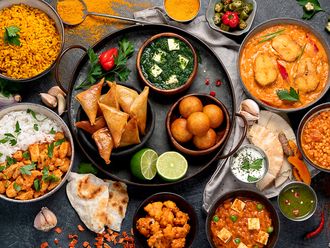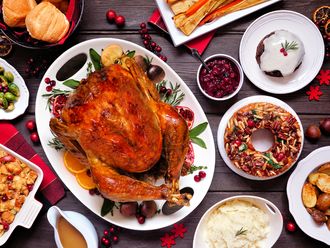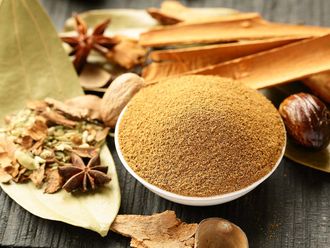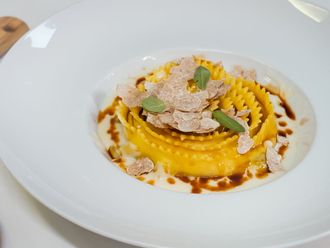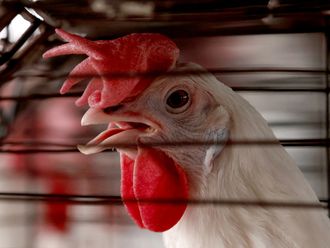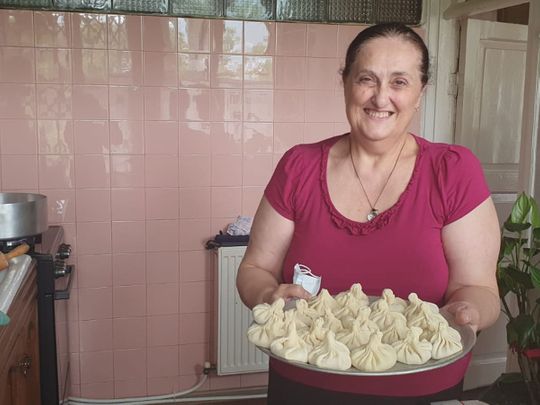
This is Nana’s house. It’s got rooms stacked one on top of another, like a house of cards. Nana’s house has stairs that stretch in narrow little rows all the way to the top. There is no elevator, because when Nana’s house was built there were none around.
Nana lives in Georgia’s capital, Tbilisi; here, she teaches tourists how to cook things her own mother taught her. Delicacies she learnt how to make by watching. No cups, no spoons in hand – you saw it, you tried it. You discarded what didn’t work and you memorised what did.
Now, Nana knows that when you use X amount of flour, you need Y amount of yeast to help it rise; it’s weighed in fistfuls and dustings, in amount of time spent asking a question, in passing a plate.
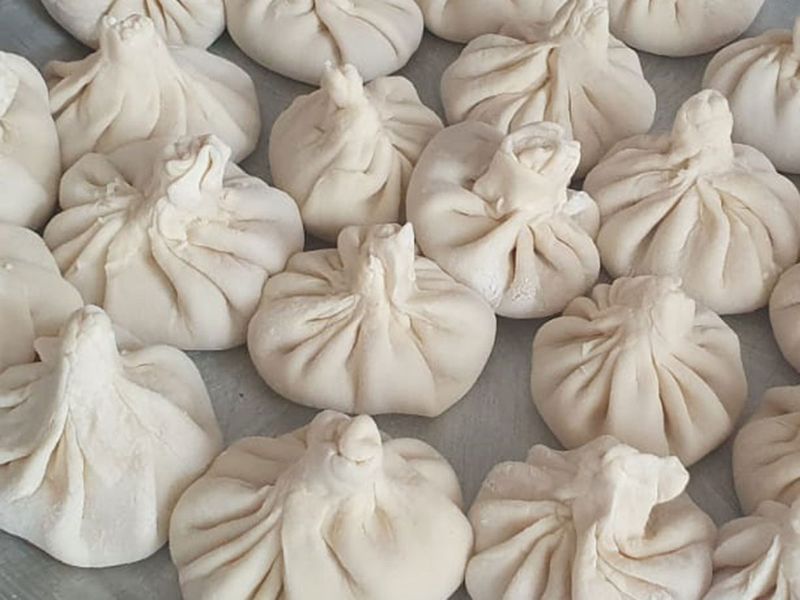
When she decided to spend her weekends teaching visitors how to cook family favourites – khinkali, a Georgian dumpling delicacy that’s full of flavourful broth and meat, and khachapuri, cheese-stuffed bread from scratch – it’s her daughters who weighed the powders and the liquid concoctions. It’s the kids who made note of the herbs and consistency of cheese. It’s them who made notes for the visitors and who come over every week to help her relay the knowledge.
Nana, whose family has lived in this house for generations, doesn’t speak English; she’s spoken Russian all her life, before and after the fall of the former Soviet Union. Her kids speak both Russian and Georgian. Communication with Nana is limited to smiles, nods and gentle prods; her daughters – Eka Ghoghoberidze, an oncologist with a penchant for cooking, and Keti Ghoghoberidze, a guidance counsellor – translate.
Welcome, say the three, to Nana Gabriadse’s house.
Making khinkali – which both the people of the Tusheti and Pshavi regions claim as theirs - is a family affair, say the women. “You are with your family, friends and they just sit in the kitchen and make khinkali. You really need help to make khinkali because it is not easy; for one person it is a huge job,” explains Keti. And each person, if Eka is to be believed, can happily down between 12 and 15 of them. “Sometimes people will eat the stuffing and leave the dumpling’s bob,” explains Eka. I manage a fair six.
The stuffing of khinkali is traditionally a mix of different types of meat; but you can stick to beef for a flavourful experience. And eating it can be messy; the trick lies in chomping a tiny bite out of one side and slurping the broth for a mouthful of goodness. (It’s either that or you’ll end up with a splash of oily liquid down your clothes.)
Khachapuri (“khacho” for yoghurt; “puri” for bread) is easily the most commonly found food in Tbilisi. A flaky bread gives way to warm, melting, half chewy – but not stringy – cheese – something akin to a margarita casserole.
Nana and company are quick to point out that not all cheeses are the same – this is a frequent refrain in Georgia; they are very, very fond of their dairy – and what goes into a Khachapuri is only the best, fattiest produce.
You may or may not put an egg atop your dish – this varies from season to season and from region to region – but the soul of the dish; warmth wrapped in a buttery bite, stays the same.
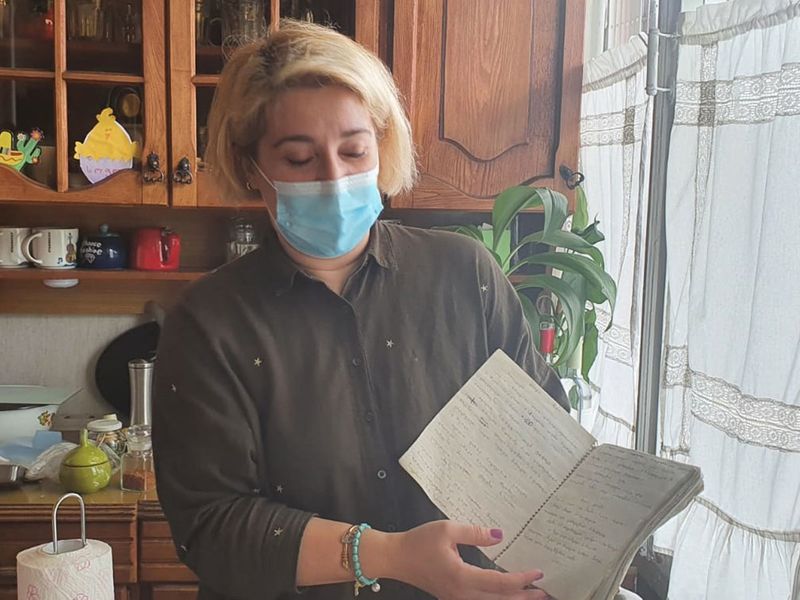
At one point in our masterclass, between eating another delicacy – a sweet yet tart plum sauce with freshly baked bread – Eka pulls out an old notebook. “The grandmothers would write their recipes down for the generations to follow,” she recalls. Written in the Georgian script, which has 33 letters, the lines look exotic to me and hold riddles I cannot decipher. Eka is quick to console me when I express this sentiment. “It’s got measurements we don’t understand either,” she laughs.
That’s what happens when you learn how to cook through observation. You learn measurements in fistfuls and dustings; know readiness in texture and tastings, in the bouquets of smells that follow the cook out of the kitchen; and recreate flavours you’ve grown up loving. That’s the way Nana cooks.
And the way you learn here – in Nana’s house.
Khinkali
Ingredients
- 1kg wheat flour
- 1 kg beef, minced
- 3 onions, chopped finely
- Fresh coriander, chopped finely
- Red pepper powder, to taste
- Salt and pepper, to taste
- 1 litre water
Method
- Mix 1 tablespoon salt in 550 milliliter cold water, pour into a bottle and put it in the freezer to get it colder, but do not freeze the water.
- Take a big bowl, add wheat flour and gradually pour the salted water in, kneading until you’ve mixed it into a dough. Cover with cling film and let it sit for 30 minutes.
- Mix the beef, chopped onions, coriander leaves, salt and pepper. Add boiled hot water and mix.
- The rested dough needs to be kneaded into stiffness.
- To assemble: Knead the dough into 40 grams cubes, roll flat. Use flour generously to ensure it doesn’t stick to the surface. Add 40g meat mix to the rolled out dough. Gather the sides of the kinkali together and pinch so that it closes – they will resemble pouches.
- In a large pot, add 1 tablespoon of salt and then fill it with water. Just before the water boils, add the kinkali one by one, stirring the water occasionally so that they don’t stick to one another.
- Boil the kinkali for about 6 to 10 minutes; the cooked ones will rise to the surface.
- Serve hot.
Khachapuri
Ingredients
- ½ tsp dry yeast
- ½ tsp sugar
- 300 ml warm water for yeast
- 750 ml water for dough
- 1 kg wheat flour
- 1 kg Imeretian cheese
- 2 eggs
- 250 gms melted butter
- 150 ml oil
Method
- Activate the yeast by mixing the warm water, sugar and dry yeast, and letting it sit until it becomes foamy and bubbly. (About 5 minutes).
- Pour the activated yeast into the flour and mix it along with the 750 milliliter of water to create a sticky dough. Add oil and mix until the dough has absorbed the oil. Wrap with cling film and rest it for 1 hour.
- After an hour, take the risen dough and cut it into two parts.
- Dust your wooden oven board with flour and then rest one of the halves. Roll it out gently with your hands.
- Now, take the butter and add on top of the dough. Add crumbled cheese in the centre of the dough. Pull the sides together – gather them until they resemble a kinkali and then pat it down until it resembles a puffed flat bread.
- Repeat with the second half of the dough.
- Preheat the oven to 250 degrees and then put the Khachapuri into the oven.
- Bake for 20 minutes, add a dollop of butter to the top and serve hot with black sweet tea.



